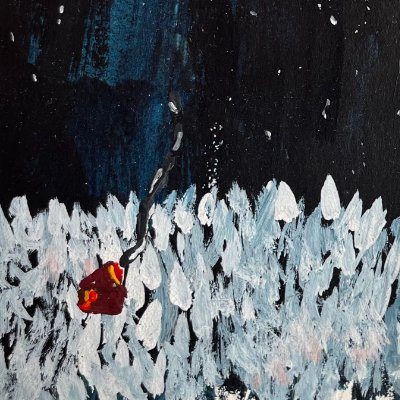The Memphis Grizzlies have the worst field goal percentage in the league. Mike Conley has been sidelined since late November with a fractured back and probably won’t return to the court until mid-January. Chandler Parsons, making $22.1 million this year, has played six games on a steep minutes restriction. Brandan Wright has yet to play this season due to a bum ankle. James Ennis was waived by Memphis last spring, re-signed in the offseason for relative peanuts, and played 29 minutes per night as the team’s starting small forward before he strained his calf a few weeks ago and was replaced by Troy Williams, an undrafted free agent, and Troy Daniels, who got DNP’d 39 times by the Hornets last season. The Grizz are looking forward to a 40-year-old Vince Carter returning from a hip injury sometime this week. They’ll take every warm body they can get, even ones that are shooting a hair under 39 percent from the field.
They also walloped the Warriors on Saturday night by 21 points and are currently one game out of third place in the Western Conference standings at 17-8. This isn’t inexplicable because nothing in sports is—we see the games happen night-by-night in front of us—but if you glance at the numbers or, say, have an extensive knowledge of NBA players and still say to yourself I can’t picture Troy Williams or James Ennis’s faces in my mind, you understand that the Grizzlies being one of the better teams in the league is close to impossible. They’ve been flirting with post-championship window irrelevance for a while now, still burnishing an extravagantly ugly brand of ball that scans as a sharp-elbowed counterpoint to effete pace-and-spaciness but never challenging the West’s elite so much as making their inevitable triumph difficult. When Conley went down, everyone with eyes and League Pass subscription figured this was to be the year the Grizz finally broke.
Explaining why they haven’t is simple and it’s not. The simple part is that Marc Gasol’s been the best center in the league since Dwight Howard started to fall off, and he’s finally healthy after a couple seasons spent mostly on the mend. This was apparently enough time for folks to forget that Gasol is exquisitely skilled and smart. He’s like a balletic rhinoceros on the block, a keen passer out of the high post, and looks a step quicker than he actually is on defense because of his excellent positional awareness. He’s even added reliable three-point range to his jumper, which makes him a better floor-spacer than nearly every guard on the Grizzlies’ roster. When Gasol is at full health, he handles a heavy workload as far as things a team needs to do to win games.
Beyond Gasol, Tony Allen is still an evangelist and a lockdown defender at 34 and Zach Randolph still beats up on second-string power forwards every now and then, but everything else is body-breaking effort and coaching black magic. If there’s one advantage to using fringe NBA talent as opposed to established players, it’s that guys on meager deals and their fourth team in two years will do anything you tell them to do. Steph Curry, or even Brandon Knight, can get away with some defensive loafing or launching a couple ill-advised pull-ups. Andrew Harrison, who was drafted 44th overall by the Suns in 2015 and played in Iowa last season, doesn’t have that kind of freedom. He needs to heed David Fizdale’s instructions as if his NBA career depended upon it, because it does. During his extended spell as an assistant in Miami, Fizdale was persistently cited as the rare coach who related to players as if he were their peer rather than their vice principal. The combination of his communication skills, an aggressive defensive scheme he picked up in Miami, and a bunch of borderline D-Leaguers who are killing themselves trying to make Fizdale’s vision work has produced a defense that keeps the Grizz in nearly every game they play despite an offense that is forever moving the ball in search of a shot they can plausibly make.
Surely, this can’t go on all season. Andrew Harrison is shooting 28.5 percent on seven shots per game. Bless him, he’s trying, but he’s not good for much other than checking opposing point guards. The Grizz are duly missing Mike Conley; it’s just that they’re getting by in the meantime with intelligence and inexhaustible pluck. They’re not winning an inordinate amount of close games: they’re 12-and-0 this season in contests decided by five or fewer points or that go to overtime. Every possession, on both sides of the ball, is hard work. Even when the team is playing well, they rarely get out to big leads.
In other words, the Grizz need Conley to return before this high-wire act reaches a macabre conclusion. But isn’t it fitting and beautiful that during this Conley-less spell, one of the only franchises in the league that’s had a fixed identity over the past decade is refining its aesthetic in the extreme, and that it’s working? There is nothing so quintessentially Grizz-like as a herd of scrubs-cum-Tony-Allen-acolytes, snarling through the NBA, bodying up stars and clanking jumpers, zooming around Marc Gasol’s massive body like angry satellites, pushing the boundaries of the effectiveness of bonkersly hideous basketball, dragging everyone down to their level, and then beating them at the sort of game no one has the stomach to play. These battered, beleaguered Grizz are as close to perfect as they’ve ever been. The more they struggle, the more they seem to thrive.



